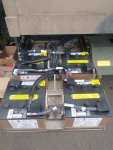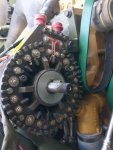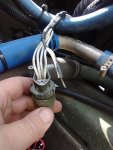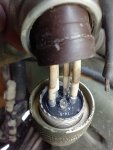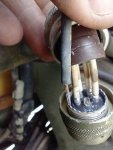Ok. Have been diligently chipping away at this issue and I believe it is now resolved.
1. Swapped the alt. Found an ugly duckling on the cheap due to an upper mounting bolt thread issue (stripped), bent fan and fan cage, missing pulley and ground strap threads stripped..... Fixed all that with fan, cage, and pulley from my existing alternator and some heli-coil thread repairs. Alt is a reman from 2016 and I have a 2018 voltage regulator - worked the same as the original alt. That is to say most of the time it worked fine but withing 1-2 drives it would go into over-voltage cut out. This test essentially rules out the alternator and the VR as culprits for this issue.
2. Decided to go back to the LBCD and just bypass it completely. I had previously disconnected the E terminal wire to it from the VR, and only recently had I installed a new battery disconnect relay since mine was bad (bad solder joint on the ring terminal inside the potted control box) and figured it couldn't have been disconnecting the batteries due to that failure. The battery disconnect relay has been replaced and upgraded to the new Bussman fully enclosed unit and is working with the cab and engine bay switches.
So after putting the load side wires on the battery side studs and unplugging the cannon plug on the LBCD..... the over-voltage cut-out (OVCO) problem was entirely resolved. I drove the truck 200 miles this way and never had a single issue. Took it off-road and everything. Multiple starts and stops, etc. No issues whatsoever.
3. So from this evidence I decided to wring out the wiring on the LBCD cannon plug just for educational purposes. I understand that with the 260A alternator and the fact that it is highly unlikely as an educated LMTV owner that I would ever connect the batteries incorrectly that it is essentially superfluous, but I have a burning desire to know and understand WHY in detail so I began this process anyway. If nothing else it's a good exercise in testing.... I started with pin A on the LBCD and immediately ran into a problem....... pin A is supposed to be the "ground reference" for the LBCD. It read open (infinity) on my meter. This wire runs all the way to the battery disconnect box and connects to the bolt where the main battery ground cable connects. I poked the wire in several places and got nothing. I worked my way to the LBCD plug and just an inch from the plug I still had nothing. I opened up the back of the plug and tugged on the ground wire and it came right out of the connector!
View attachment 869406
View attachment 869407
View attachment 869408
This is clearly a case of a cold solder joint or the wire being tinned and never soldered from the factory. This flaw has clearly existed with this truck from manufacture.
There was enough oxidation that I was not able to solder it without replacing a section of wire:
View attachment 869409
I now have a solid ground for the LBCD. I swapped the load side cables back to the load studs and test ran it. LBCD indicator light went green and all seems to be right. I have not been able to cause an OVCO condition since this repair with the usual methods that incite this behavior.
I still do not understand why this would cause the OVCO. I had previously disconnected the E terminal from the VR (the only connection between the alternator and the LBCD) and it still occurred.
